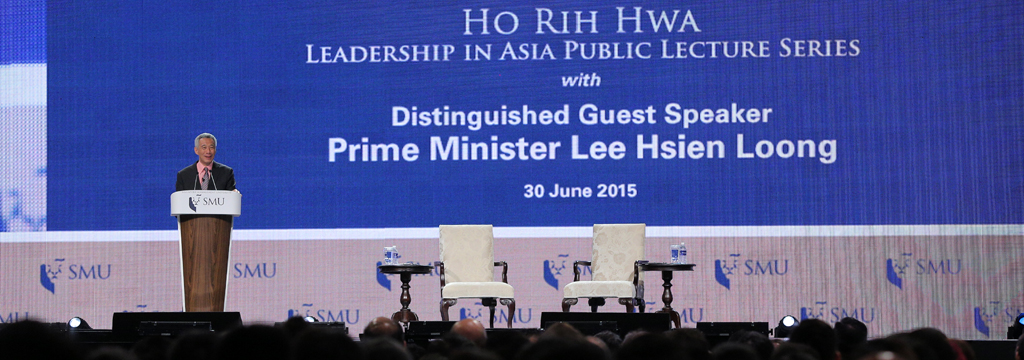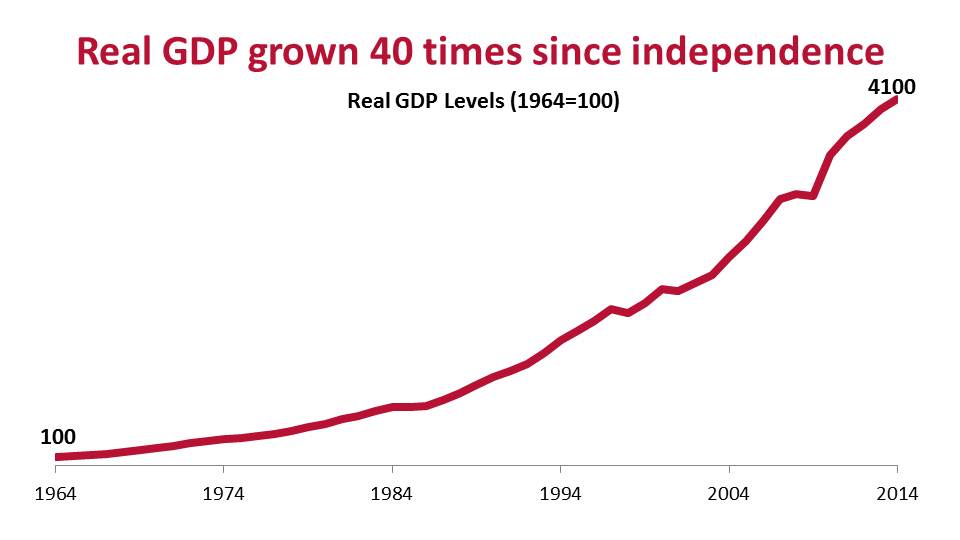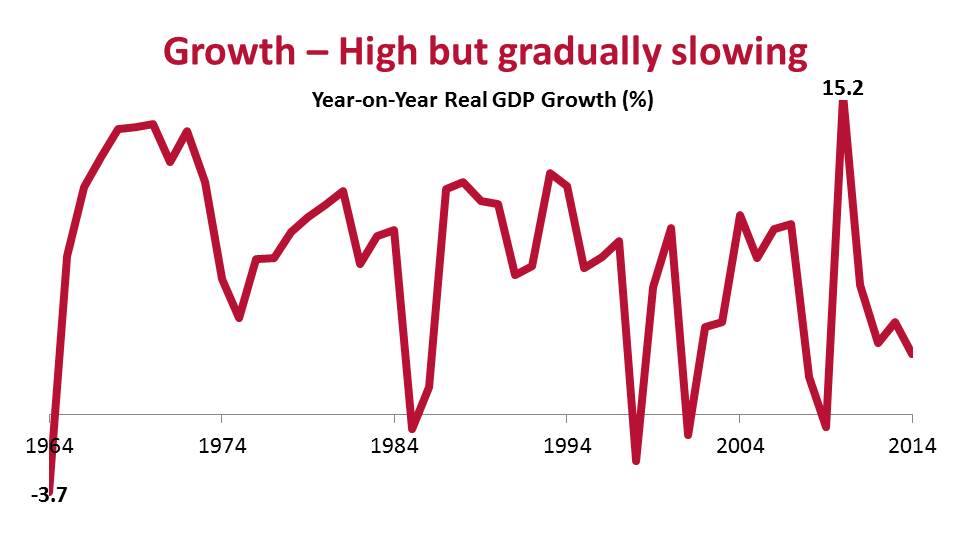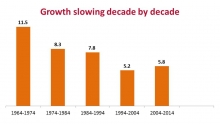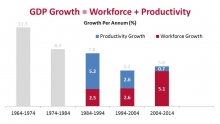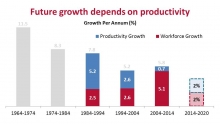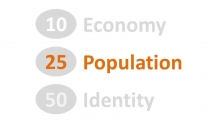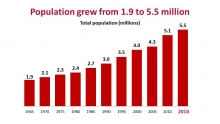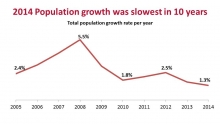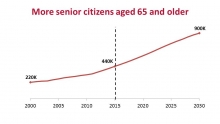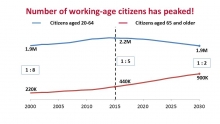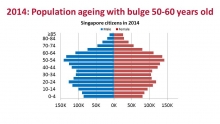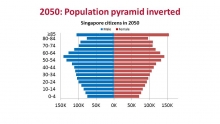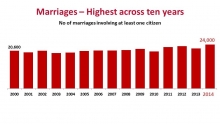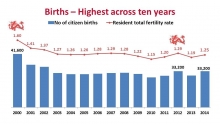PM Lee Hsien Loong was the guest speaker at the SMU Ho Rih Hwa Leadership in Asia Public Lecture Series on 30 June 2015.
PM Lee also held a dialogue session with the participants after his speech.
Mr Yong Pang How, Chancellor of SMU
Mr Ho Kwon Ping, Chairman of SMU
Professor Arnoud De Meyer, President
Distinguished guests, ladies and gentlemen.
I am delighted to be here today to join you all for the Ho Rih Hwa Leadership in Asia Public Lecture. When we separated from Malaysia and became independent 50 years ago, our challenges seemed all encompassing and insuperable. There were so many desperately urgent priorities – growing the economy, building the SAF, education, healthcare, housing. Everything was critical and our survival was at stake.
One important new area which we needed to master quickly was diplomacy – to stake out our place in the world and defend it. We had no experienced diplomats so we called on businessmen, on senior bureaucrats, on academics, even on politicians to help, and Mr Ho Rih Hwa answered this call. He was not born a diplomat. He was the son of an immigrant, a successful entrepreneur and a prominent businessman. But he served with distinction as our ambassador in Thailand, in Belgium and the European Economic Community as it then was and also at the United Nations in Geneva. He refused to accept any remuneration because he saw this as a National Service, a duty that he was honoured to discharge.
Pioneers like Mr Ho Rih Hwa saw the urgency and the enormity of the challenges that we faced. But instead of running away, they threw in their lot and they gave it their best shot. And with their help, Singapore overcame the challenges and thrived. And that is why today we honour the pioneer generation – because we today are the beneficiaries of their sacrifices.
So, it is fitting that 50 years on at this lecture named in Mr Ho Rih Hwa’s honour, we discuss the critical challenges that we face for the next 50 years and ask ourselves – what should we do? Challenge ourselves. What should we do? What challenges do we face today?
(click to enlarge)
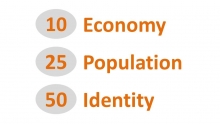
Yet having reached this high level, there is no ready model anywhere in the world that we can simply say, “That is what I want to be, follow that, do that and get there.” If we can continue upgrading ourselves over the next decade, in 10 years, I think we will be in a different league. Then we have the resources, we can make the investments in our people. We can afford the social safety nets. We can improve all our lives. But if we cannot make this breakthrough, if we have reached the ceiling and stagnate and lose ground, then we will go through what other economies who have hit such a ceiling are going through now and struggling with – Taiwan, Korea, even Japan, trying their best to find a new way forward. If we are stuck for a decade, at the end of that, we will face not just economic problems but even social problems. Because of the unemployment, young people will be unable to find jobs. Instead of hope, we will have restlessness. So, on a 10-year view, I would say we focus on the economy.
On a 25-year view, I say, we focus on population. Population issues come to the fore. The economy can go up, the economy can go down but in the long run demography is destiny. Twenty-five years is long enough for our birth trends and our marriage and parenthood policies to take root and to have an impact. It is a generation or nowadays almost a generation. It is old and long enough for this generation of students to graduate, get married, have children and turn up at commencement when your children graduate.
Now, over 25 years demography makes a difference. A Total Fertility Rate (TFR) of 1.2 where we are today, compared to a fertility rate of 1.5 which is where we would like to be. In one year, there is difference of 9,000 babies, but over 25 years, that is more than 200,000 new people, more babies born. It can make all the difference to a population because if we can get our fertility rate up to 1.5, of course I would like to go higher, but let us get to one-and-a-half first. Then we can keep our population younger and more vibrant. But if the TFR stays at 1.2 then I think that is going to be much harder even with immigration to have a young and a vibrant population. A shrinking society would be an ageing society and an ageing society will cause profound problems. Our economy would be stagnant or declining.[/highlighter] The whole tone of the society instead of being young and forward-looking, would be pessimistic, oriented to the status quo or even looking towards a glorious past. I think that is a sad place to be in.
So, 10 years: the economy; 25 years: demography, population; but 50 years I would say identity counts. That is the most profound challenge we have. The fundamental reason we have succeeded over the last 50 years is not just because we have had good policies. Yes, we have good policies but the policies have worked because the population have supported these policies which would therefore be implemented and could therefore produce results for Singapore. That depended most fundamentally on our collective will to succeed and on the sense that we were building a nation together.
Over the 50 years we have experienced national crisis from time-to-time starting with independence, separation, when our backs were to the wall. But each time we overcame a crisis, we proved our mettle and in the process deepened our shared experience and our Singapore identity. So we got here because of the will, because of that passion, because of the commitment to Singapore. Over the next 50 years, we will need good policies but just like for the last 50 years, for these policies to succeed, we need a strong sense of identity and of nationhood. We need to be proud to be Singaporeans. We need to want Singapore to be special, to make Singapore special. If we have that fundamental conviction and motivation, then we can make everything else work, then we can overcome all our challenges.
(click to enlarge)
Now, let me talk about it in a bit more detail one by one starting with 10 years –the economy. We are in a good position today because we have been growing for the past 50 years. And if you look back to 1965, over 50 years our economy has actually grown more than 40 times in size since independence. It is a most impressive curve. And that is real terms, real GDP discounting inflation. If you look at it per capita, our GDP has gone up per capita, 13 times and the growth has been sustained year-by-year. We have had good growth. You look at it over the last 50 years. We have enjoyed starting from a minus position when we were in Malaysia. We got out. We made very high growth and year-by-year we have sustained that until now. We feel it in our lives because our children lived better lives than ourselves. They are born into homes that are better than the homes which we lived in. They face less risk in life. They have more choices of jobs than their parents or their grandparents. I know sometimes young people feel pressured and look at the future and say life is tough. But I assure you, 50 years ago, life was tougher. Because we have made this progress for 50 years economically, so this year we have good reason to celebrate SG50 and to give thanks for our journey from the Third World to the First.
(click to enlarge)
We have had high growth, one of the fastest in the world. But if you look at it over the longer term from here down, gradually the growth has been slowing. Because as we have matured, as our economy has reached more of its limits and taken up the slack, it is a natural process. So if we look at it decade by decade rather than year by year, you can see how each decade the growth has been a little bit slower except here. But generally the trend is, decade by decade, we have been slowing down. As we mature our base gets bigger, every incremental step is harder work. All countries experience this, even China is starting to see this happening now.
(click to enlarge)
So, how do we get that growth? If you break it down, the economy grows by two ways. First, either you get productivity, you do better and perform better; or second you get the workforce to grow, you expand more bodies, more workers, therefore it is larger. It is very illuminating to look and see how much of our growth came from workforce and how much of our growth came from productivity. We do not have numbers all the way back to 1965. But if you look at the last three decades you can see that about half came from workforce growth and about half came from productivity growth. In the last decade, not quite so good but overall that is roughly the picture.
(click to enlarge)
We have been able to grow our workforce because we have had a young population. After the war baby boomers were born. They came of age, they entered the workforce and they became productive. As the baby boomers grew older they are now about my age or a little bit younger and starting to retire. We topped up with foreign workers and boosted our workforce and so we have kept our economy growing. In this most recent decade the productivity growth has come down. This has been a very unstable decade because we have had the global financial crisis, we have had many uncertainties in the world. But we have managed to grow with our own population topped up with foreign workers and therefore we could keep the economy going. It is just as well we did this. Because if we have not done this and we had gone into the global financial crisis and shrunk like many other countries did, then I think we could have had many companies closing down or maybe leaving and going somewhere else, and causing job losses for Singaporeans. I do not think we would have been able to weather the financial crisis with low unemployment, bounced back the following year and see our lives improve as rapidly as they have done.
(click to enlarge)
Yet there are limits and we cannot keep on increasing and bringing in foreign workers at a high rate just to maintain growth. I fully understand Singaporeans who are anxious about the influx of foreign workers, about the impact on housing, the impact on public transport, the competition for jobs. That is why we have slowed down the inflow and accepted the trade-off. And the trade-off is a slower, not quite so vibrant, economy. But while we slow down, we have to do it in a measured and a balanced way because you do not want to overdo the medicine. You do not want to cause our companies to shut down, particularly you do not want to cause hardship to our SMEs which employ many Singaporeans and we do not want to cause our own workers to lose their jobs.
(click to enlarge)
This is where we have come so far but what can we expect if we look ahead? As far as we can tell, if you look ahead and look at this trend as well as what we are able to generate, I think a realistic estimate for our GDP growth is something like two to four percent. Not as high as before but not bad for where we are. Half of that comes from employment increase and half of that comes from productivity increase. Now, are we certain? No. What do we know? Some of these we know for sure. I think the workforce numbers we have a good feel for because we know how many Singaporeans there are. We know how many young people have been born and will be ready to work in the next 10 years and even if this year I have a bonanza baby boom, they are not going to enter my workforce in the next 10 years. So the workforce numbers I am pretty sure is not going to exceed two percent because the local numbers we can tell. The foreign numbers we have cut back and I think we have to maintain our foreign worker policies, we cannot let that balloon out. And that means if you are going to get to what we want to be, which is four percent growth, we need to produce two percent in terms of productivity and that is not an easy task.
Many developed countries have tried to this. It is a conundrum. They are all facing this difficulty. Productivity is hard to raise and particularly since the global financial crisis, it has stagnated and many countries are facing problems. We, too, over the last few years have not achieved two percent growth. It is a hard slog because it requires a transformation of the society, of our economy, of businesses. We have to do things in different ways. You need new companies to come in, in order to take over form old companies. There is turnover, there is churn, there is uncertainty and then only can there be progress. You have to keep on at it. Mr Lee Kuan Yew used to quote the President of the Japanese Productivity Centre, Mr Goshi. Mr Goshi lived to a ripe old age and he was a real productivity advocate, passionate and Goshi used to say that productivity requires a transformation of mankind’s thinking and “it is a marathon without a finish line”.
We have a difficult task cut out for us but we have no choice because bigger countries, if you do not perform so well, you have the hinterlands, you have resources in the ground, you can survive. We do not have anything but ourselves. I have just been hosting Prime Minister Tony Abbott from Australia and he was telling me how when we became independent, Australia’s per capita income was several times ours, and now we are, I think double theirs. I said that may be true but you have uranium, you have gas, you have opals, you have gold, you have land. I have nothing. Just my people and the sweat of our brow and that is what we have to do.
So, to go forward we have got to improve our productivity and maintain our growth because only then can we have good jobs and new opportunities for our people. It will be difficult because there will be upheavals, there will be changes, there will be uncertainties, angst. But if you want to progress, that is the only direction you will have to go. That is something you must do across the board in many industries. Productivity is a very difficult idea to get across because it is abstract. It is a very difficult thing to grasp. You know in principle what number you want but it is not quite clear what thing you must do. Let me give you a specific example. Let me use our port as an example, PSA. I just went to PSA last week. They opened two new terminals in Pasir Panjang, Terminals 3 and 4. They are container terminals and the container terminals, the container yards have got cranes which carry the containers. This is at the old yard but it is what you have and you have container cranes and they are operated by people who used to sit in the little cabins on top of each container crane moving containers. Up across onto the truck, up from the truck across onto the stack, back and forth. One crane, one operator, spot on top. If you want to go to the loo, you stop the crane, you come down, you run a long way or you bring a plastic bag. That is what they do. Now, PSA uses automated gantry rail gantry cranes in their container yards. Nobody sits up there anymore. They got TV cameras up there, they got computer controls up there. They got the controllers sitting in an office air-conditioned, managing several cranes at once. One controller five cranes and here is a picture of me trying to do just one crane from the office and it is automated. There is computer vision. The computer handles most of it. If it finds something out of line beyond its tolerance, it will stop, the operator intervenes, puts things rights, which happens about half the time. So one operator, five cranes and the rest of time the cranes work automatically. So productivity per operator has gone up. One operator one crane. Now one operator five cranes and he only has to intervene half the time and the technology can only improve. That is the way PSA has gone. Has it got to do that, does it have a choice? It has no choice because PSA only has a living as long as it is more efficient than everybody else. Otherwise, the shipping lines would not bring their containers here, would not bring their businesses here. PSA would be out of business – 100,000 Singaporeans in PSA and in the maritime industry would be out of jobs. If PSA does not upgrade and do this, their competitors will – Tanjung Pelapas, visible just across the water, Hong Kong, Shekou in China or Shanghai which is already the busiest container port in the world. These competitors have bigger hinterlands, cheaper workforce, more resources. If they win over PSA’s business, we have lost our cheese and our lunch. But then if PSA does automate, what happens to the workers? Well, if we can grow our business, same number of workers do twice as much, three or four times as much business as before, well business will go up, wages will go up. But if you cannot grow your business, if there is no growth, then one operator to one crane, now one to five that means four operators are going to be redundant. That is going to be a tough spot to be. So, when we go for productivity, it is both and opportunity and also a challenge.
This is a technical job but the same story of technology displacing jobs and creating new jobs is happening even to white collar workers. Take for example the finance industry, where computer programmes and apps are taking over the role of loan officers in assessing loans and credit worthiness. You do not depend so much on your officer talking to the person, assessing him, trying to figure out whether he is reliable, whether he is responsible, whether he will pay back your loan. You go for big data, find out who his friends are, find out what his lifestyle is, find out what his spending pattern is and then you corralate that with lot of other people who have similar patterns and you say, is he going to pay me back or not? The computer will tell you more reliably than the loan officer. Loan officer has to generate a new job for himself or he is in trouble.
Many existing jobs are going to be upended this way. If you are a doctor, some of your diagnosis may be done by a big blue computer. If you are an engineer, many of your calculations already done by computer systems. If you are pilot, a lot of your flying is done by the aeroplane. Some people think half of exiting jobs may be taken over by computers at one way or another over the next 20 years and will change. I would say even if you are a lawyer, a lot of your work will change because the business of looking up the statutes, the business of researching the documents, of finding relevant references, of highlighting and underlining all the bits which tell in your favour and against you, computers can do that quite well. They do not get tired. I think making speeches may take a bit longer but it is a serious message, we have to stay ahead of the curve, prepare our workers and businesses for the future economy.
That is why we launched SkillsFuture as a national movement. It will play a critical role to help Singaporeans become resilient and adaptable. It will make sure if you play your part that our people will always have the opportunities to develop to the fullest with training available at every stage of your lives. Because as your jobs change, your skills set need to change and you cannot depend on what you learned longer and longer ago in the past as you grow older. You have to learn new skills and you have to be able to do new jobs. Then when the world changes, we are prepared and we are able to change with it.
So this is a transformation of the society, the transformation in the way we learn, in the way we work, in the way we value individuals for what you do, what you contribute and we must work at this because that is the way to make progress on productivity, that is the way to grow the economy and that is the way really most fundamentally so that every worker can feel proud of themselves and our society can be one where everybody has a valued place. So, 10 years I think the economy is a big problem.
If we take a 25 year view, then I would say the key challenge for us is our population. Because demography, the population profile has a profound impact on every aspect of our lives, on our economy, on our society, on our security. For the last 50 years the demographics have been favourable. We had a post-war baby boom. Fortunately we were able to educate the babies which were born after the war, create jobs for them and make them valuable assets contributing to Singapore. If we had not done that, then instead of having prosperous Singapore you would have had migrant workers abroad, working in tough jobs, low wages but they go and they take that hardship because your alternative of staying at home is even worse. That is why we have migrant workers working in Singapore. Yes, they do tough jobs. They are willing to do the tough jobs because the alternative for them staying at home is even tougher.
(click to enlarge)
We avoided that. We got into a virtuous circle so that we could grow our economy, build up our resources and invest in our basic needs, in healthcare, in education, in housing, in defence. We grew our economy and our population and over 50 years the population went up from 1.9 million at independence to where it is today which is 5.5 million people. As our standards of living went up and people grew more affluent, our fertility fell, families had fewer babies. The fertility fell first of all for those who are better educated and then by the late 1970s, early 80s, 30 plus years ago, for the population as a whole. 30 years ago we have already concluded we had a problem and we had to start to give Singaporeans incentives and support to have more children. Before that we have to restrain families from having more children than they could take care of but it changed and we had to say, here, have this, have more children if you can afford it. Despite all our incentives, despite all encouragements, despite all the speeches we made, National Day or no National Day, the TFR continued to come down and now as the baby boomers are not babies any more but in their 50s and 60s and aging, we are experiencing a major demographic shift. The population growth is slowing down. You look at it over the last 10 years, it was up, then it came down. A lot of this was by immigration but where we are now, our population now is growing the slowest that it has done over the last 10 years. Last year only 1.3 percent, but what is growing is the number of not so young people and specifically the people aged 65 and above, those who are retiring and entering their golden years. This is what engineers and mathematicians will call an exponential curve; 15 years ago, 2000, there were 220,000 people aged 65 and above retired. Today, it is double 440,000. In another 15 years, it will double again and we will have 900,000 people aged 65 and above. Think about it, everywhere you go, it will be like Japan today. You will see people and you will see people with silver hair and that is old people but if you look at the younger people, their numbers are not going to grow.
(click to enlarge)
In fact if you look at the people who are working age, our population of working age citizens has already peaked. It is quite scary; 10 years ago we had 1.9 million who were aged either between 20 to 64. We are not at 2.2 million and that is the peak and we are coming gradually down, 15 years from now we are going to be back where we were 15 years ago, one big cycle go up a bit, back down a bit, but you are not quite back where you were because 15 years ago, you only had 220,000 old people to look after. In other words, eight working people supporting one old man or lady. Today the ratio is five to one. 15 years from now we are back to 1.9 million working people but by then two working persons will be supporting one old man or woman. Think about it. You can see that in our population pyramid too. This is where we are today. The men are the blue, the females are the pink. Usually if you have a pyramid, the base should be bigger than the top. In our pyramid the middle is fatter than the bottom and the middle means the people who are here, the baby boomers, 50, 60, 65. This is the group now beginning to retire.
(click to enlarge)
Amongst the younger population, you see a small echo of the baby boomers here who were born to these parents but after that the numbers are down. That is today, aging and quite a big group one in five above 65 years old. But if you project forward and take it say to 2050 we will have this shape with today's fertility, with today's immigration we will be even more inverted and still with the biggest group here and with the younger groups smaller and smaller. It is something to worry about because what does rapid aging mean for a nation. We are going to be growing older faster than nearly any other society in the world. I ask you, taxes, with this picture, with that graph, who is going to pay the taxes to spend on whom. two working persons one retired citizen. The economy, how do we stay prosperous and vibrant and forward looking? Our defence, who is going to man the SAF? Who will defend us? We can't be Dad's Army.
Already we are seeing the impact of an aging population today. There are more sandwich families, typically two adults working, maybe one and a half working adults supporting children, supporting elderly parents. We are seeing greater demand for healthcare and social services. I think whatever we do with our population, we are going to see aging as a serious trend for a long time to come. We have to make sure that our elderly age well and live fulfilling lives which means financially they must be well-prepared for retirement with homeownership with good healthcare provided for with CPF with silver support. It means they have to be socially active. We encourage active aging, strengthening community support, come out be active, do tai chi with your friends, meet your friends, play mahjong even, it is good as it exercises the brain, make our homes friendly so that seniors can live safe, healthy and fulfilling lives. We have to take care of our old folks, take care of our aging. Ultimately the best and indeed the only fundamental solution for Singapore is for more Singaporeans to marry and after they marry to have more children and that is a message to all of you too. On that count we have laboured mightily and I am happy to say if you look at last year’s numbers, there is a little bit of good news, although it is still early signs yet. We have done many measures and over the last 20 years what we have done I think has helped, more affordable and accessible preschool places, more maternity leave, more pro-family employers, including the civil service becoming more pro-family.
(click to enlarge)
If you look at the numbers, last year the number of marriages is 24,000, the highest we have had since a very long time. At least that is a first step, get married, now we can think about having kids. Babies born last year, not bad, not brilliant but not bad. Why? Because last year we had 33,200, not a dragon year but equal to a dragon year, of course equal to a small dragon year because 12 years ago that is where we should be, but anyway I count my blessings even if they are small ones. If you look at the TFR, we have been 1.2 plus then came down, last year 1.25, so this signal is ambiguous but at any rate it is not getting worse and I think if we work hard, there is some chance of it going in this direction, better. This is a fundamental issue. We talk about it lightly, we joke about it but it is a fundamental issue and we have to do more to help Singaporeans to get married, to have babies to take care of their families and baby bonuses help but it’s not just money. It is also the practical arrangements, the values, the attitudes, the social understandings which we reach which help people to have kids, helping young couples to get their house, helping parents with care giving, promoting flexible work arrangements, providing affordable and high quality healthcare, childcare, reducing stress in our education system. These are things we have ideas on and I think we will do more of progressively but these are just policies and the government cannot solve this problem just by policies because it requires all of us to change our norms, our culture, for us to become a more family friendly country and that takes time but that’s why I say on a 10 year view this is not critical but on a 25 year view we have to start now and hopefully in 25 years’ time we will be able to benefit from some of the results.
(click to enlarge)
But if you take a 50 year time frame, then I would say even more fundamental than demographics is the question of identity of a sense of pride of being Singaporean, of wanting to be Singaporean, of wanting Singapore to have a future. How do we strengthen this identity and the character of our nation and our society? How do we reinforce what makes us unique as Singaporeans, help each of us to do well and help Singapore as a whole to do well? Fifty years ago when we became independent, we had nowhere else to go and Mr Lee Kuan Yew never tired of telling us “the world does not owe us a living, fight for it.” But because the challenges were great, because we had no choice, so we felt a sense of common purpose building this nation. That was the only way forward for us. People were galvanised including many who were not born here but who made this their home and their cause. They made an act of will, a choice and they said Singapore is where I will make my home and build my future and my nation and they did. Year after year, we had crisis, we had successes, we grew closer together and we strengthened our identity as Singaporeans.
For the next 50 years, how do we maintain this sense of nationhood and strengthen this identify and common purpose so that our people will want to make Singapore a success and a shining light in the world? As we progress, there are two threats to this idea of a Singaporean identity. One we could just dissolve, melt into a globalised world and lose that special sense of being distinctive Singaporeans, different from non-Singaporeans. The other risk is that we could divide internally along fault lines, fracture into different groups and each group with its own exclusive identity and lose any sense of becoming one people. We can dissolve with globalisation. It is an opportunity for us, so many things we can do but it's a threat to us if we do not hold together. Because we have become so open, so cosmopolitan, our people can adapt anywhere and be at home in many places in the world. Most of our people speak English, the young ones all the more so. Everybody today is educated in English. Most of our people have post-secondary education, more than half, probably more than two thirds, many are graduates. With English, with good education, doors to Singaporeans open all over the world and there are 200,000 of us we think living, working or studying abroad in all kinds of different countries. You know people in Australia, I was talking to Tony Abbott, they think there are more than 50,000 Singaporeans there. In China there must be large numbers, America there must be large numbers. But I give you two very interesting examples. One person I know of, a Singaporean, lives in Rwanda in eastern Africa. What is he doing there? He keeps honey bees. He is a bee keeper, he grows honey, he farms it and he exports it. I got to know of him because I went to a restaurant here and they served me dessert with Rwandan honey, made by the Singaporean in Rwanda. I blogged about him on my Facebook and he got in touch with me and said hello. He says next time I will show you my honey bees because the Africans do not farm honey, they hunt honey but he goes there, he farms it, he has made a living for himself. Another Singaporean I recently got to know lives in Hokkaido in Japan. I was there on holiday recently, I met busloads of Singaporeans. This chap I did not meet. It is nice to meet busloads of Singaporeans, roomfuls even better but this chap got in touch with me. He says he does not know me but he lives and works in Niseko. Niseko is a ski resort – very good snow – a lot of Singaporeans go there and this man is a full time ski instructor making a living in Niseko. He says “next time you come I will give you a lesson.” Singaporeans are all over, comfortable all over, they travel enormously. Every year we make altogether about 9 million trips abroad by air and sea. That means on average, more than two trips per resident and that does not count the 13 million trips to Malaysia, people going to Johor Baru shopping or supper or Genting, any number. In SMU I was just talking to your Chairman, 80 something percent of your students have opportunities to go overseas as part of your studies. I hope you are studying overseas. I met some of you when I am overseas and they are very confident, come up to me with aplomb and say hello, I am from SMU. I said what are you doing here? The last group I met was in Italy. I said, ‘you are studying in Italy?’ He says, ‘no I am studying in Helsinki but I came to Italy on holiday. I am from SMU.’ Singaporeans travel. I think it is marvellous but at the same time if we become so comfortable abroad that we lose a sense that only Singapore is truly home, as Dick Lee says “this is home truly”. If a large part of our talent goes overseas, either to seek challenges or to seek their fortunes, then I think we will be depleted, our centre cannot hold. It is one of the challenges which other countries have, small countries have. New Zealanders have a big population abroad. The Greeks have a big population abroad. The Irish have a big population abroad and they have difficulty keeping the centre together. The Greeks are now in very serious difficulties and if Singapore gets into that situation, I think we will have a problem. We will just melt away, dissolved by globalisation. We need to make sure that while we create all these opportunities overseas, Singaporeans still continue to feel that call of home deep in their hearts and consider here Singapore our home.
That is one danger we can melt away but the other danger is that we can quarrel among ourselves and split along fault lines, become a divided society. It could be race and religion, our traditional fault lines. It could be new fault lines, LGBT issues for and against. It could be social and political fault lines, rich versus poor or it could be external forces which pull us in different directions. Jihadist terrorism is one such factor, ISIS could cause a very serious schism in our society if one day we have a terrorist attack in Singapore and it could split our multi-religious society. Apart from ISIS, the influence of big powers can make a difference. We are still a multi ethnic society, Chinese, Indians, Malays, others. Yes, we are all Singaporeans but it will be a very long time before we can be immune either to the ethnic pulls on us or to the commercial interests of our business people working in these different countries and therefore always open to being influenced if not become dependent on those countries and on their interests rather than ours. To keep Singapore special to maintain that sense that I am a Singaporean, I am proud of it and I want to uphold it, to feel a duty and a responsibility not only to your fellow citizens today but to the next generation, to feel one united people and not warring clans, I think in a very long term that is our most fundamental challenge.
Year after year, we had crisis, we had successes, we grew closer together and we strengthened our identity as Singaporeans. PM Lee Hsien Loong![]()
What is it which will hold us together, which will help us to strengthen our identity in the very long term? The first thing which comes to mind for Singaporeans is food. Every time we are away we think chicken rice, char kuey teow, roti prata. Yes, food definitely helps but I think food is surely not fundamental. It has to come from something deeper than that, a shared sense of what Singapore stands for, what we want to achieve here together and that comes from our shared experiences, our bonding through these shared experiences becoming one people, becoming comrades, more than friends. It depends on how we grow up and live together in our schools in our national service in our HDB flats and estates. It depends on how we overcome crisis whether it is SARS whether it is MERS, whether it is the global financial crisis dealing with the problems together. It depends on how we help one another in times of need, how we celebrate successes together, celebrate SG50, celebrate a good performance in the SEA Games. Through these shared experiences we can live and reinforce the values which we share which mark us out as Singaporeans, meritocracy multiracialism, justice and equality, fair and just society, full and equal opportunities for all, a place where the human spirit can thrive, can prosper and tomorrow will always be brighter. We will learn I think also through hard times and I am sure in the next 50 years, there will be hard times and we will be tested but these tests, these crises will be opportunities for us to bond and we have experienced some of this Singapore spirt this year. When Mr Lee Kuan Yew passed away in March, we grieved together. It was a massive outpouring of emotion but we were not downcast. We stood firm we queued up in the sun, we lined up in the rain, we paid our respects to our founding father. Recently when we lost schoolchildren and teachers on a school adventure leadership training trip on Mount Kinabalu, we grieved together. We rejoiced during the SEA Games when we felt proud to be Singaporean not just winning 84 gold medals but the way our people conducted ourselves - when the music stopped when it should not have stopped and we knew how to sing Majulah Singapura without the music, I think that is a moment of pride.
When Ashley Liew who was an SMU alumnus showed class and sportsmanship, he was a marathoner early in the race, several of the others took the wrong turn, he found himself in the lead. He waited, gave chance, let them come back, resumed the race. He did not win a medal, he finished 8th but he said “it is not always about the medals, it is also the things you do in between.” You need that spirit and it is a spirit which is not manufactured by the government. These are spontaneous shows of pride of solidarity. It is a spirit which is embraced, which is created and owned by Singaporeans, people who stand up for these values in their daily lives in their actions and make this a distinctive nation that we are proud of and want to belong to so that never mind where we are, we identify with it and we say I am a Singaporean.
I have spent some time talking to you about serious challenges which we look forward to, the economy, the population, our sense of identity. They concern our survival but we are dealing with them. I think we have approaches, you do not have permanent solutions but we have ways we can tackle them. For the economy, we have a strong team whether at MTI or EDB and IE Singapore Spring, securing investments, opening markets, helping SMEs, creating jobs. We have SkillsFuture - valuing a person less for the qualification he has and more for his contributions and his potential. For the population we are managing immigration issues, it is sensitive but we are watching them very closely. We are promoting active aging and we are strongly encouraging marriage and parenthood in case you did not hear this message just now, I am telling you again. For our national identity we nurture values and common experiences in our schools, through NS, even the new volunteer corps and we use SG50 and other opportunities not just to celebrate but to deepen our sense of being Singaporeans. Besides everything which we do, I think life will teach us lessons. Difficult times will come and through them we will learn what it means to be a Singaporean whether we like it or not.
But all these things we want to do depend on good leadership, leadership at all levels but leadership also for the nation. We need leaders with a sense of responsibility wholly committed to Singapore and to Singaporeans, leaders who can win your support and rally the country together, leaders who can work with us and make the next 50 years as glorious as the last 50 years and then not only will our next generation enjoy a good life but they will be able to look forward to a brighter future for themselves and for their children. Thank you very much.
Explore recent content
Explore related topics

